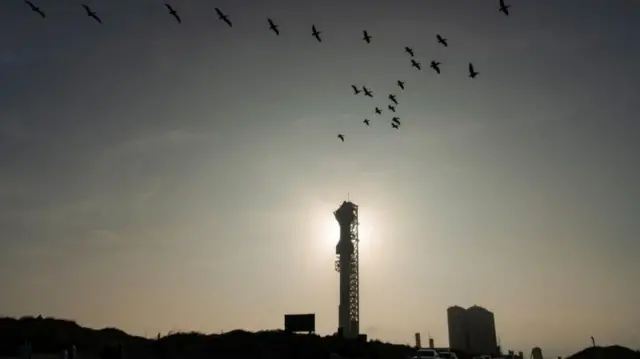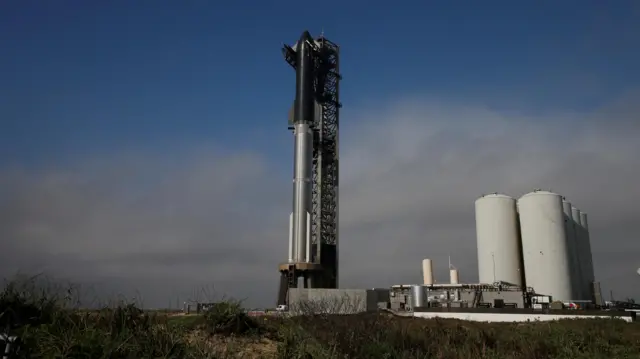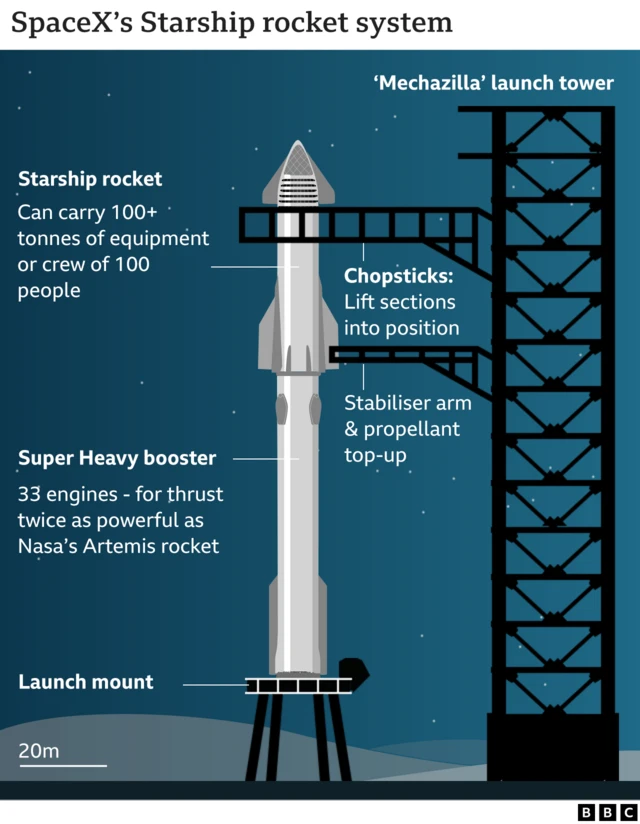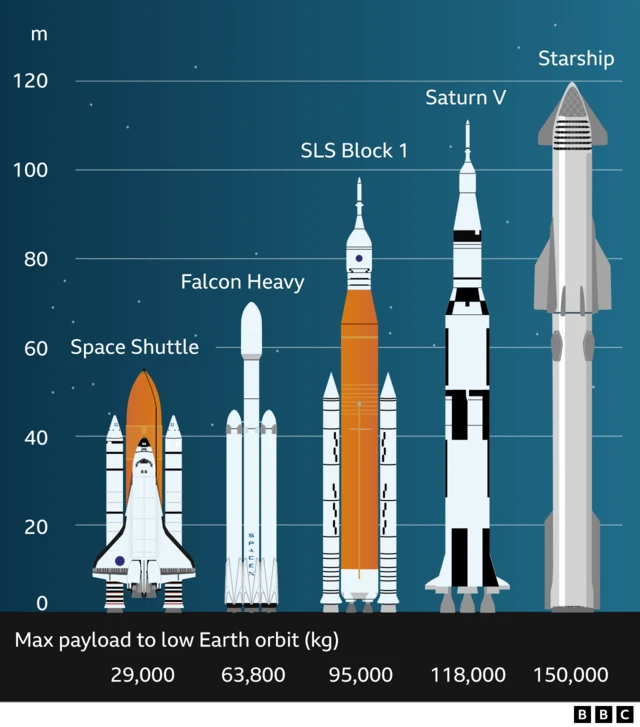Prepare for lift-off...published at 13:46 BST 6 June 2024
The Starship rocket is due to launch in less than five minutes now from SpaceX's base in Boca Chica, Texas.
There's a lot of hope pinned on this mission after three failed test flights.
As a reminder, you can watch the launch live by clicking the Play button at the top of our live page.






